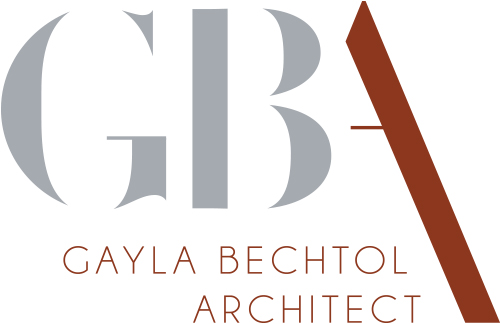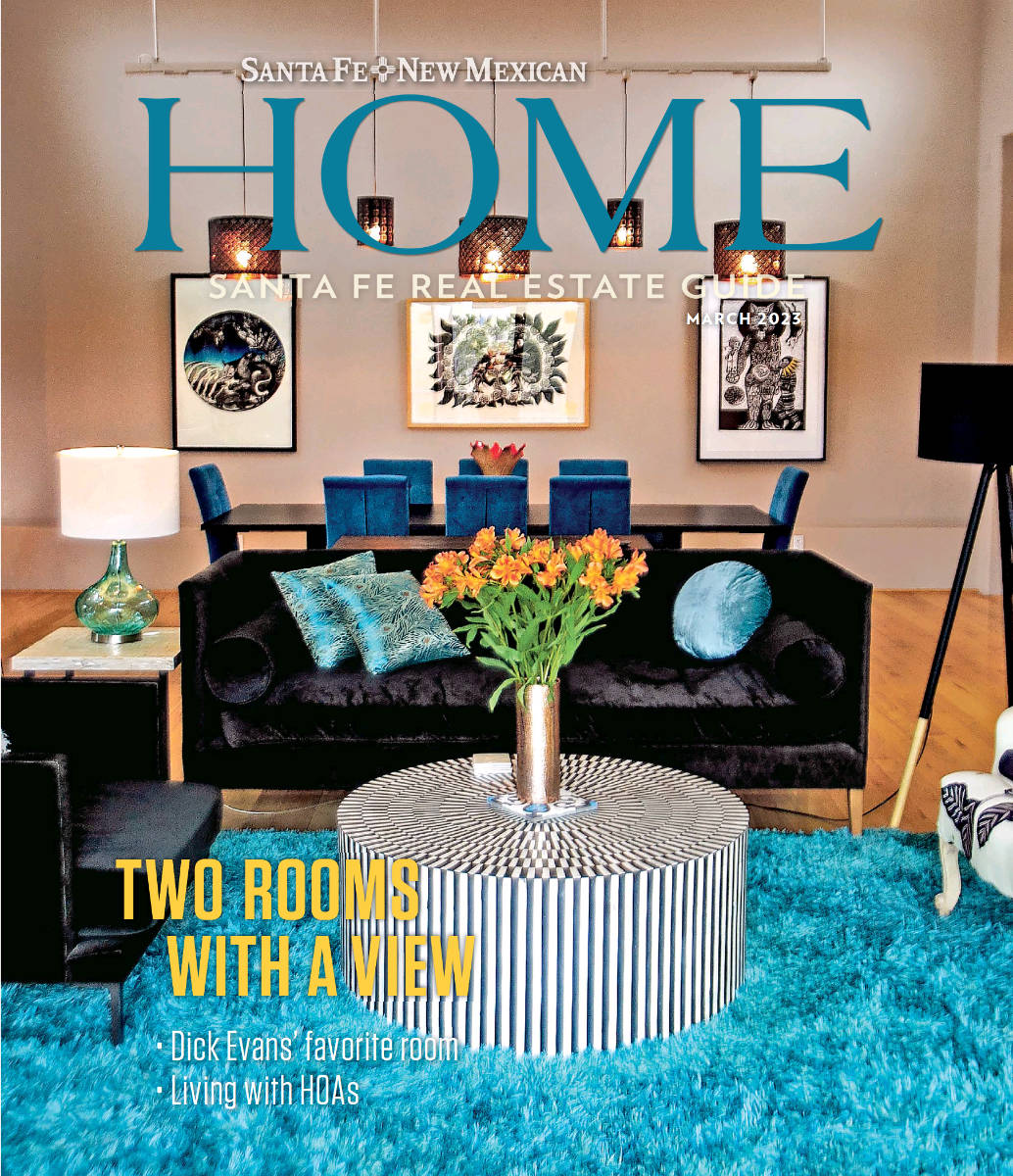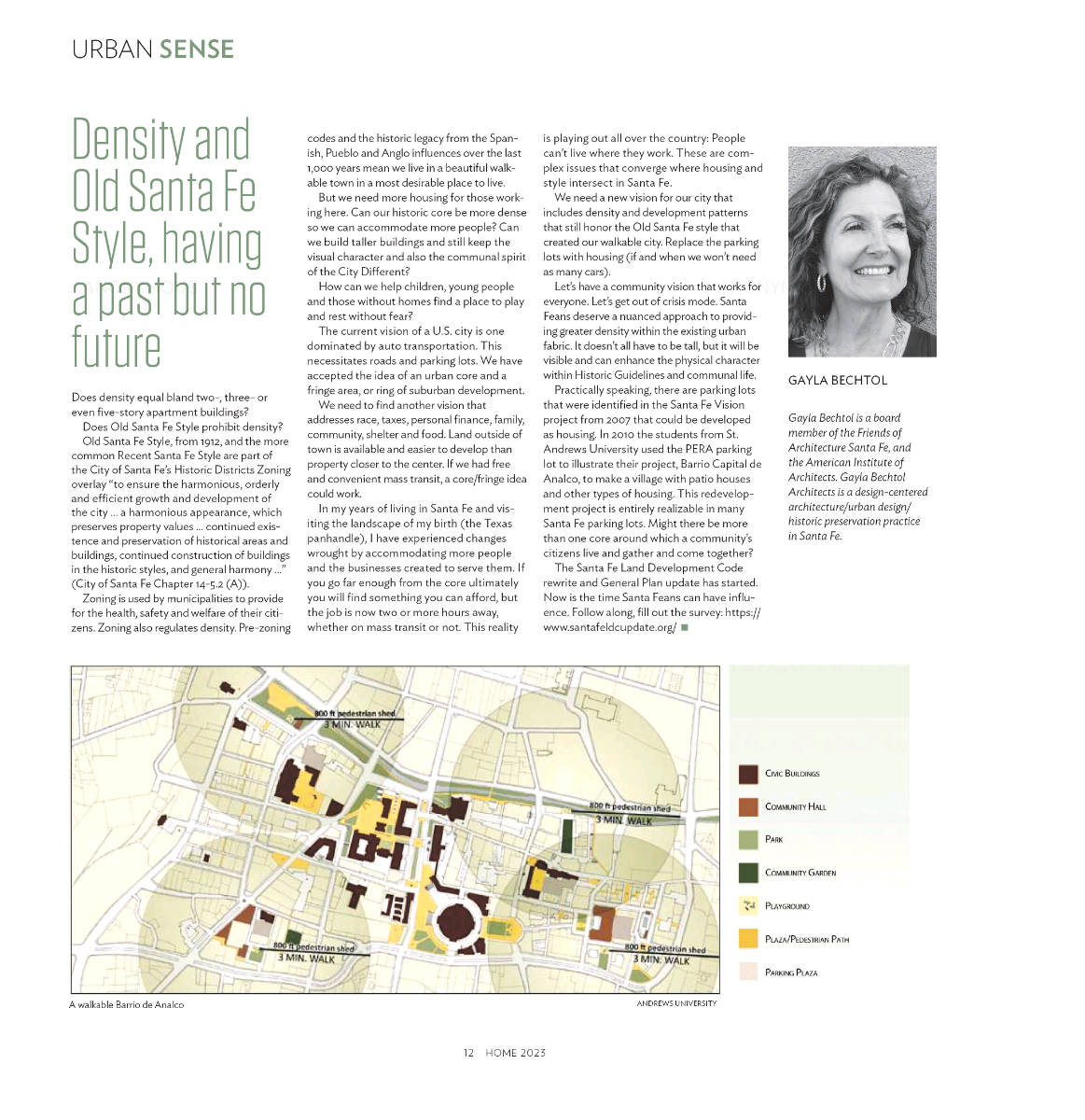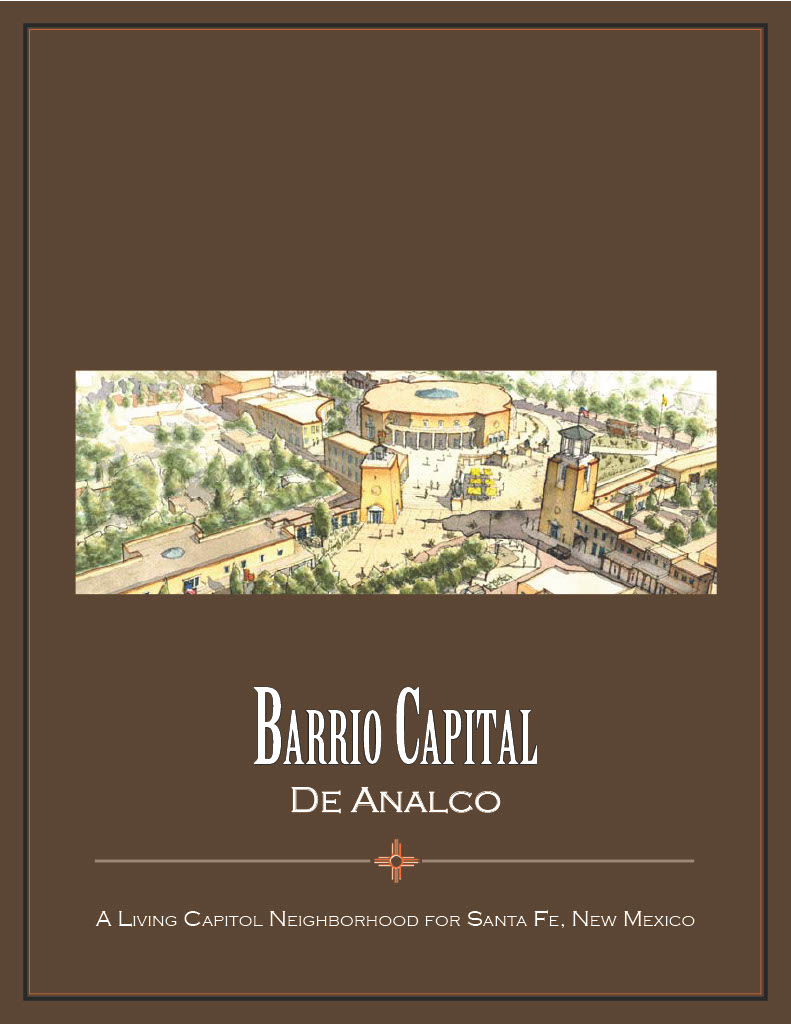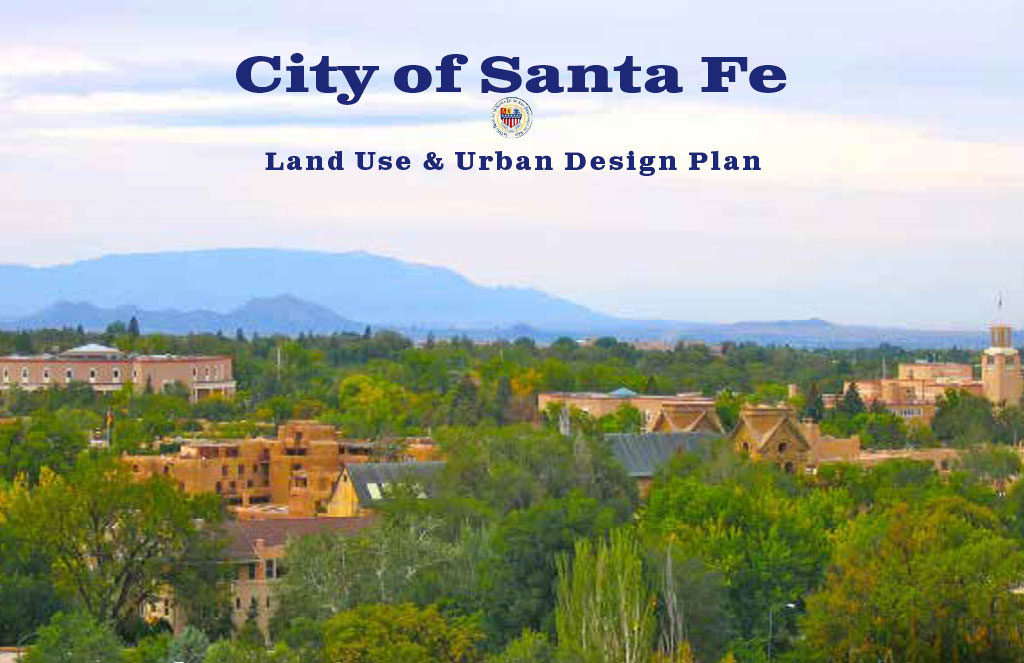In the March edition of The Santa Fe New Mexican’s Home Magazine, I discuss how the Historic Santa Fe zoning overlay promotes orderly, efficient municipal expansion. Urban Sense.
Read the Article:
Old Santa Fe Style, from 1912, and the more common Recent Santa Fe Style are part of the City of Santa Fe’s Historic Districts Zoning overlay “to ensure the harmonious, orderly and efficient growth and development of the city…a harmonious appearance, which preserves property values…continued existence and preservation of historical areas and buildings, continued construction of buildings in the historic styles, and general harmony…” (City of Santa Fe Chapter 14-5.2 (A)).
Zoning is used by municipalities to provide for the health, safety and welfare of their citizens. Zoning also regulates density. Pre-zoning codes and the historic legacy from the Spanish, Pueblo and Anglo influences over the last 1,000 years mean we live in a beautiful walkable town in a most desirable place to live.
But we need more housing for those working here. Can our historic core be more dense so we can accommodate more people? Can we build taller buildings and still keep the visual character and also the communal spirit of the City Different?
How can we help children, young people and those without homes find a place to play and rest without fear?
The current vision of a U.S. city is one dominated by auto transportation. This necessitates roads and parking lots. We have accepted the idea of an urban core and a fringe area, or ring of suburban development. Most of us want more space around us, not less.
We need to find another vision that addresses race, taxes, personal finance, family, community, shelter and food. Land outside of town is available and easier to develop than property closer to the center. If we had free and convenient mass transit, a core/fringe idea could work.
In my years of living in Santa Fe and visiting the landscape of my birth, I have experienced changes wrought by accommodating more people and the businesses created to serve them. If you go far enough from the core ultimately you will find something you can afford, but the job is now two or more hours away, whether on mass transit or not. This reality is playing out all over the country: People can’t live where they work. These are complex issues that converge where housing and style intersect in Santa Fe.
We need a new vision for our city that includes density and development patterns that still honor the Old Santa Fe style that created our walkable city. Replace the parking lots with housing (if and when we won’t need as many cars).
Let’s have a community vision that works for everyone. Let’s get out of crisis mode. Santa Feans deserve a nuanced approach to providing greater density within the existing urban fabric. It doesn’t all have to be tall, but it will be visible, and can enhance the physical character within Historic Guidelines and communal life.
Practically speaking there are parking lots that were identified in the Santa Fe Vision project from 2007 that could be developed as housing. In 2010 the students from St. Andrews University used the PERA parking lot to illustrate their project Barrio Capital de Analco to make a village, with patio houses, and other types of housing. This is a redevelopment project entirely possible, in many parking lots in Santa Fe. Might there be more than one core around which a community’s citizens live and gather and come together?
The Santa Fe Land Development Code rewrite and General Plan update has started. Now is the time Santa Feans can have influence. Follow along, fill out the survey.
https://www.santafeldcupdate.org/
Gayla Bechtol received her architecture degrees from Harvard University and from the University of Southern California. Gayla Bechtol Architects is a design-centered architecture/urban design/historic preservation practice that has created designs for homes, institutions, and urban spaces for nearly 30 years. Bechtol practiced deep democracy while leading the citizens of Santa Fe to the award-winning Santa Fe Railyard. She is a board member of Friends of Architecture Santa Fe.
